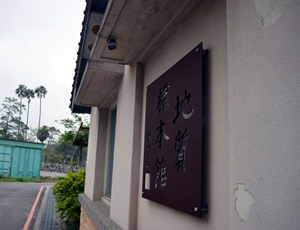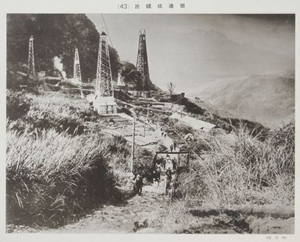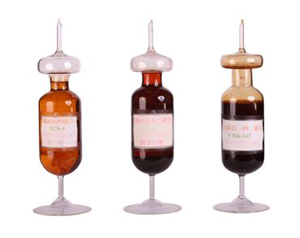:::
Legacies of NTU - No. 3
Hidden Treasure: Taiwan’s first oil field in Geo-specimen Cottage
 The Japanese-style Geo-specimen Cottage has a collection of over 3,500 specimens of precious fossils, minerals, and rocks. When one talks about Taiwan’s mineral production, little is it known that in addition to the gold mines of New Taipei’s Jinguashi (金瓜石) and the natural gas of Tainan’s Guanziling (關仔嶺), Taiwan is also one of the world’s most historic sites for oil production as the island’s oil field is the second oldest in the whole world. Luckily, this section of the island’s history has been stored in National Taiwan University’s Geo-specimen Cottage.
The Geo-specimen Cottage is the third among the NTU Museums and is run by the Department of Geosciences. According to historical records, the discovery of oil dates back to the early 19th century under Jiaqing (嘉慶) Emperor’s rule during the Qing Dynasty. Bits of oil was first identified drifting along upstream Houlong River located in northwestern Taiwan currently the Tsu-Huang Kun Oil Field (出磺坑) in Miaoli County, yet as the area was still undeveloped, the Qing Government did not further investigate.
It was not until 1861 that a local named Gou Qiu (邱苟) actually discovered the oil spring. Qiu dug a three meter oil well and sold the mined oil to local residents as a means of lamp-oil. The locals named the oil “sulfur oil, and as such, Taiwan’s first oil well in the Tsu-Huang Kun area, literally “the pit where sulfur is emerges,” was born.
 Taiwan’s Tsu-Huang Kun Oil Field is the second mechanically operated oil field in the world. (Photo: Encyclopedia of Taiwan) In 1887, the Qing Government contracted an American engineer to build a steam power churn drill so as to further exploit the petroleum, and daily production soon averaged at 950 liters. Not only was this the first oil field in Asia, it was also the second mechanically operated oil field in the history of mankind. Unfortunately, the project was not further expanded at that time due to contract issues with the engineer.
The oil field was not further expanded until Taiwan came under Japanese rule. In 1904, the Japanese Government began to actively develop the Tsu-Huang Kun Oil Field due to strategic reasons, and in addition to exploiting oil productions, it also constructed roads, hostels, and medical facilities so as to provide the mine workers with basic necessities. This enabled the undeveloped Tsu-Huang Kun to grow into a thriving town.
The Japanese Government opened up 98 oil wells and had exhausted the majority of the field’s production during its 50 years of rule in Taiwan. As a result, the oil field fell into neglect in the decade after the Japanese retreated from the island, and was only revived after major breakthrough in mining technology was developed in 1979. Up to this day, the site still produces oil and natural gas.
 NTU has had the honor of borrowing these three bottles of crude oil specimens for display.
(Photo: NTU Gallery of University History) The heritage of this unique history, including historical artifacts, photographs, models, and illustrations of the tools used for development, is being displayed at the Taiwan Oil Field Exhibition Hall, and the collection includes items dating back to the Qing Dynasty. NTU’s Geo-specimen Cottage has had the honor of borrowing one of the major pieces―three bottles of crude oil specimens―to be displayed among the Fossil Collection Exhibition area. In addition to preserving the island’s rich topographical history, the cottage hopes to help promote geological knowledge among the public so that more can learn about the island in which we dwell.
To see the oil specimens or explore more collections by the Geo-specimen Cottage, visit the official website HERE.
Click HERE to access original article written by the Geo-specimen Cottage (03/12/2014).
National Taiwan University is home to an abundance of educational and cultural artifacts that bear the history of the campus’ past. As a result, the NTU Museums project, a campaign that integrates the university’s ten individual museums, was launched in 2005 and officially inaugurated in 2007 so that the school’s hidden treasures could be introduced to the public. To honor the school’s past, the “Legacies of NTU” series will feature the stories of NTU’s hidden treasures by taking you through the most precious items among the university’s collection.
|



